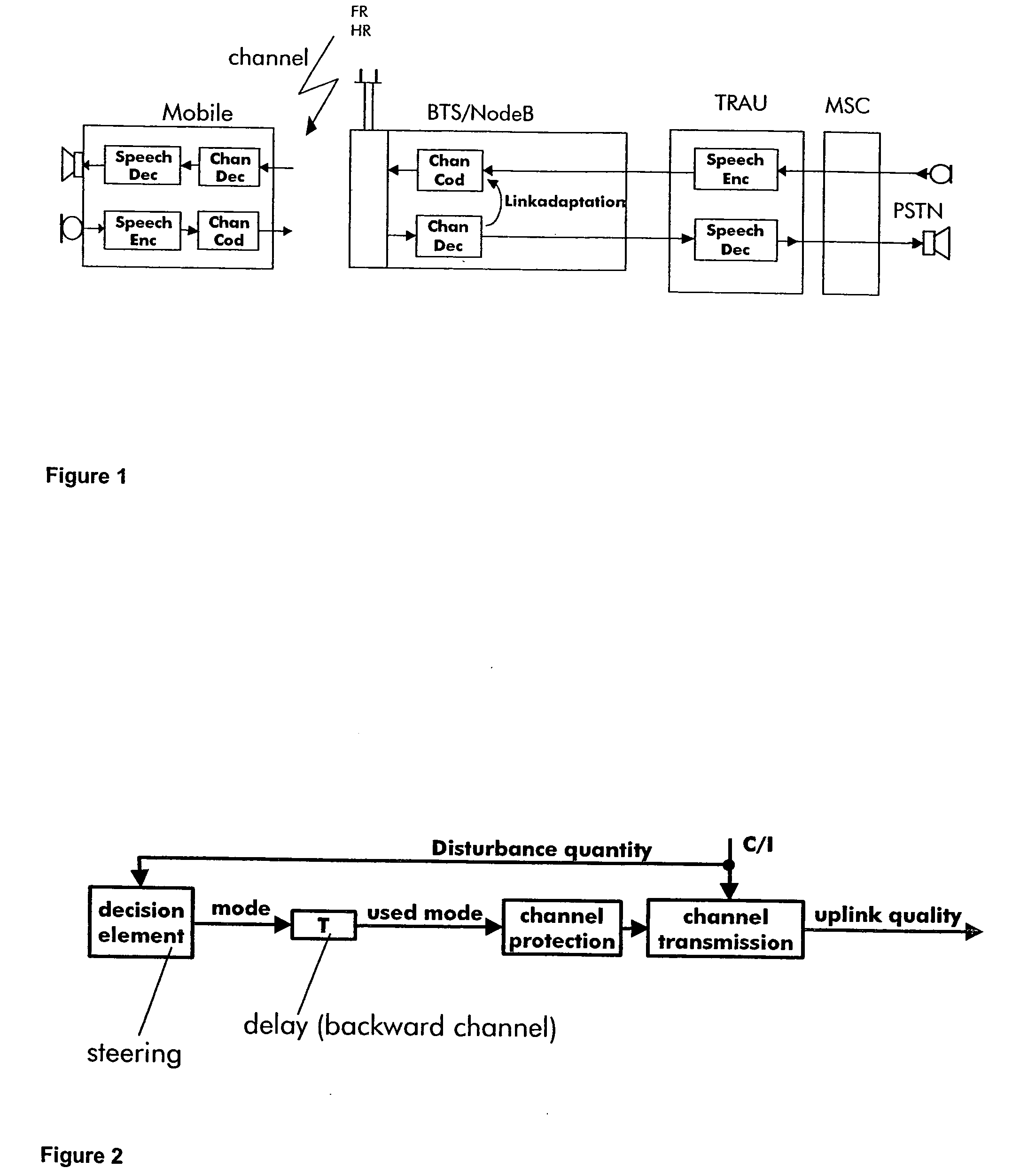Method for codec mode adaptation of adaptive multi-rate codec regarding speech quality
- Summary
- Abstract
- Description
- Claims
- Application Information
AI Technical Summary
Benefits of technology
Problems solved by technology
Method used
Image
Examples
first embodiment
[0072] Following with reference to FIG. 7 the invention is described, explaining how to derive and predict a level value BER_crit from the calculated BER(n) values.
[0073] The BER values or the time line denoted by index n, respectively, are first partitioned in intervals or windows W of Length L.
[0074] Inside the window W the relative time index is then denoted m. Thus the i-th row of BER values is then denoted BERW(i, m) with BERW(i,m)=BER(i·L+m︷n) for m=0,1,… ,L-1
The values in the window i before and including the index m are sorted preferable in descending order, which gives for each time index m 1BERW(i,m) 2BERW(i,m)⋮ C+1BERW(i,m)
with 1BERW(i,m) denoting the so far maximum value, 2BERW(i,m)the second highest value and C+1BERW(i,m) the C+1 highest value in general. The index m must be big enough to provide all values i.e. C≦m
[0075] The critical level to allow C concealed frames is BERW_crit(i,m)=C+1BERW(i,m) since only C frames have higher BER-values as thi...
second embodiment
[0084] Using this simple solution it may seldom happen that the maximum of one window lies at the end and the maximum of the next window at its beginning. These frames would be bad frame signaled so that more than one frame in a row is error concealed. In order to prevent this possibility a more sophisticated solution with two time shifted sets of windows is later described as the invention. There it can be shown that error concealed frames are guaranteed to lie at least L / 2+1 frames apart.
[0085] Since these effects are seldom the simple solution from above is mostly considered sufficient and will give the right critical level for decision.
[0086] A generalization of the solution to C≠1 but C=2 or 3 concealed frames allowed in a row is easily done by setting C=2 or 3 in the formulas above.
[0087] In order to implement this method according to the invention only approx. 5 to 6 additional permanent storage locations in memory are needed per channel. The method provide a BER level whic...
PUM
 Login to View More
Login to View More Abstract
Description
Claims
Application Information
 Login to View More
Login to View More - R&D
- Intellectual Property
- Life Sciences
- Materials
- Tech Scout
- Unparalleled Data Quality
- Higher Quality Content
- 60% Fewer Hallucinations
Browse by: Latest US Patents, China's latest patents, Technical Efficacy Thesaurus, Application Domain, Technology Topic, Popular Technical Reports.
© 2025 PatSnap. All rights reserved.Legal|Privacy policy|Modern Slavery Act Transparency Statement|Sitemap|About US| Contact US: help@patsnap.com



